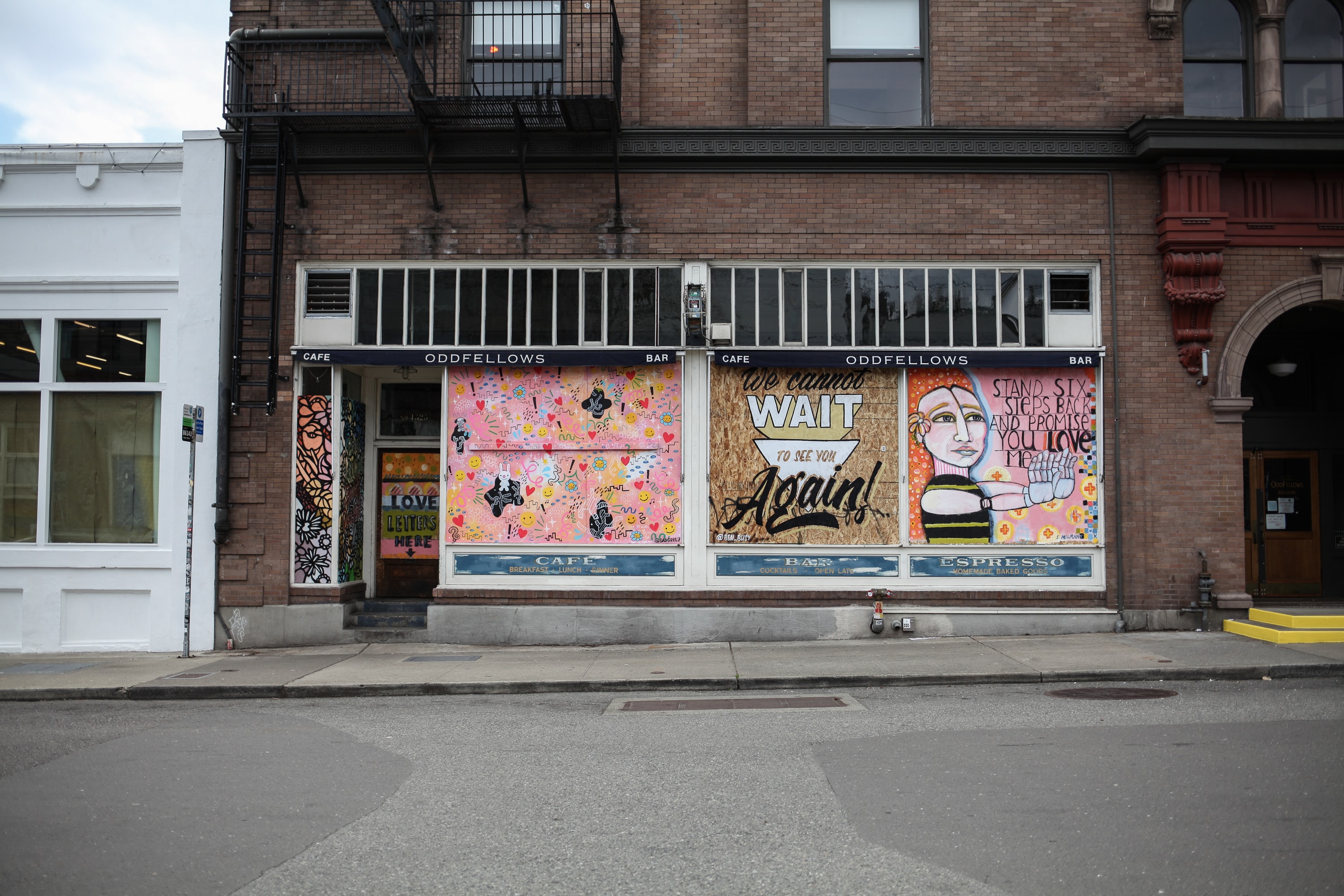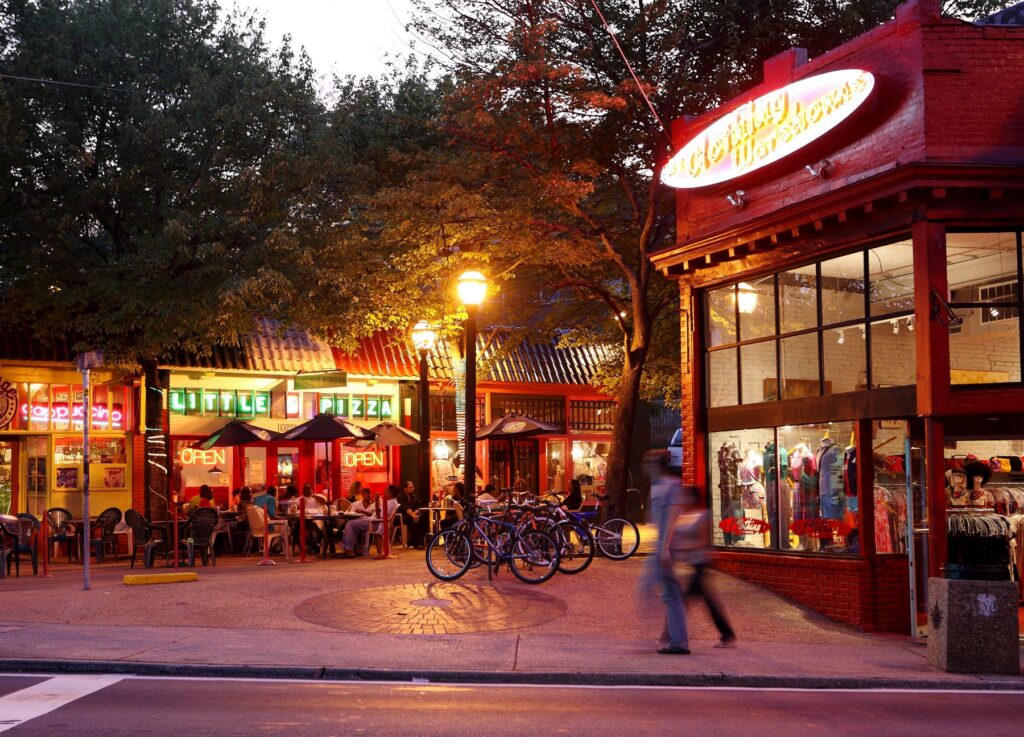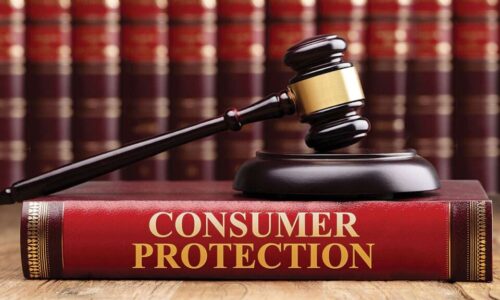The Impact of COVID-19 on Black-Owned Businesses

Policy mandates and social distancing rules during the COVID-19 Pandemic forced the closure of an unprecedented number of businesses across the United States. Already facing an unfair playing field, African American businesses shared a disproportionate amount of business closings due to the Pandemic. Despite the relaxation of safety guidelines and federal assistance such as PPP loans to aide small businesses, many of these interventions have failed to reach Black-owned businesses.
Why Black Businesses Matter
Small businesses and commercial corridors are a critical component of community development. Small businesses owned and operated within a community provide substantial economic growth to that community, while medium and larger sized businesses that are not locally owned tend to have the opposite effect.[1] Commercial corridors are often the heart of a community, creating opportunity for wealth generation, cultural identity, and employment. The role of small businesses is even more pronounced in Black communities. Black businesses provide an outsized portion of Black employment, compared to their white counterparts. Black businesses also profess a strong commitment to community development and service.[2]
Before the Pandemic, Black women were the fastest growing population group for entrepreneurs.[3] Yet despite the known benefits of Black businesses, the United States does not have enough of them. African Americans represent 12 percent of the population, yet just 2 percent of the country’s business owners.[4] African American entrepreneurs often have trouble accessing capital. According to the Opportunity Fund, “Black–owned firm application rates for new funding are 10 percentage points higher than white–owned firms, but their approval rates are 19 percentage points lower.”[5] Shut out of traditional banks, many African Americans turn to Community Development Financial Institutions for access to capital.
Community Development Financial Institutions (CDFIs) are financial institutions certified by the United States Treasury to extend credit to groups underserved by traditional banks. They are critical to the creation and sustainability of minority-owned businesses, as well as financing nonprofit organizations, affordable housing, microenterprises, and small businesses. In addition, CDFIs provide services like financial counseling and business planning after dispersing a loan. They help effectively manage the financing venture in preparation for good stewardship in the long run.

Impact of COVID-19
The COVID-19 Pandemic forced the closure of countless businesses across the country, and Black-owned businesses were hit especially hard. According to the National Bureau of Economic Research, there was a 22 percent drop in active business owners across the nation from February to April 2020, the largest two-month drop ever recorded.[6] African Americans experienced a 41 percent drop in active business owners, the largest loss across ethnic groups.[7] As society adjusted to the Pandemic, businesses generally rebounded. However, black owned businesses still reported the greatest amount of inactivity.
In order to aid businesses during the COVID-19 Pandemic, the Federal government passed the Coronavirus, Aid, Relief and Economics Security (CARES) Act, which established the Paycheck Protection Program (PPP), a to-date $953 billion loan program to help businesses and entrepreneurs to continue to pay their workers. PPP, ran by the US Small Business Administration, allows businesses and other qualifying organizations to apply for low-interest loans 2.5 times that of their payroll. In addition to payroll costs, PPP loans can be used to pay for rent, utilities, interest, and other operating costs. PPP included a loan forgiveness provision to companies that maintained the income of employees.
There was great criticism over PPP in its effectiveness at stabilizing the economy and reaching small businesses. Accessing PPP loans was dependent on a previous banking relationship, and many of these banks prioritized larger businesses that requested larger loans.[8] There was initial confusion on who was eligible to apply and what the funds can be used for. Many businesses that did receive funds returned them out of fear of penalties. Many economists argued there were more efficient ways of providing aid, such as the government simply covering employee paychecks, as other countries did.[9] Others argued that the US Small Business Administration was ill-equipped to handle such a large and important program, as the SBA website frequently could not handle the capacity.[10]
However, the most alarming failure of the PPP was its inability to assist communities of color. While there were headlines featuring small businesses denied funding, many black businesses did not have a banking partner to apply through. As PPP was administered by the SBA, only SBA-approved lenders could lend funds. CDFIs are certified by the US Treasury. Even though the SBA and the Treasury are both Federal agencies, many CDFIs were not preapproved by the SBA, and were not initially eligible to disperse PPP funds. Thus, many businesses that met all qualifications for a loan but rely on CDFIs for lending were locked out of this assistance.[11]
We currently have a separate financial system for black communities and mainstream America, necessitating the existence of CDFIs. This financial redlining is another vestige of racist policies from the 20th century, where federally insured banks systematically refused to lend to black communities. Today, these same banks chose to lend less to predominantly black communities on average because they see too small a profit margin. However, they still collect deposits from these communities and receive federal funding to administer policies aimed at social welfare. By doing so, they reinforce social caste system that neglects black and brown people.
Conclusion
In the latest round of PPP funding, CDFIs were included in the eligible banks and were given an exclusive window to collect applications before the traditional banks. CDFIs are a critical component of the Biden Administration’s plan for racial equity, as $9 billion were recently allocated to CDFIs via the new Emergency Capital Investment Program.[12] Still, more must be done. While CDFIs are a strong vehicle to circulate money within a disadvantaged community, greater policy reforms are needed to level the playing field. Cities are the engine of economic growth in this country, yet they are host to vast amounts of income and racial inequality. Majority Black cities like Atlanta and Detroit are bastions of hope for more equitable America. As the country seeks to increase its economic output while reducing its inequality, it should first look inward and integrate those left out of prosperity.
[1] Fleming, David A., and Stephan J. Goetz. “Does Local Firm Ownership Matter?” Economic Development Quarterly, 2011
[2] Boston, Thomas D. “The Role of Black-Owned Businesses in Black Community Development.” Jobs and Economic Development in Minority Communities, 2006
[3] Umoh, Ruth. “Black Women Were Among The Fastest-Growing Entrepreneurs-Then Covid Arrived.”, Forbes Magazine, 26 Oct. 2020
[4] Theodos, Brett, and Jorge González. “Building Community and Wealth in Underserved Commercial Corridors: Chicago’s Neighborhood Opportunity Fund.” Urban Institute, 30 July 2019
[5] “New Report Reveals Gaps in Access to Credit for Minority-Owned Small Businesses.” Opportunity Fund, 4 Nov. 2019
[6] Fairlie, Robert. “The Impact of Covid-19 on Small Business Owners: Evidence of Early-Stage Losses from the April 2020 Current Population Survey.” National Bureau of Economic Research, 8 June 2020
[7] Fairlie, Robert. “COVID-19, Small Business Owners, and Racial Inequality.” National Bureau of Economic Research, 4 Dec. 2020
[8] The Paycheck Protection Program Continues to Be Disadvantageous to Smaller Businesses, Especially Businesses Owned by People of Color and the Self-Employed.” Center for Responsible Lending, 27 May 2020
[9] Casselman, Ben, and Jim Tankersley. “$500 Billion in Aid to Small Businesses: How Much Did It Help?” The New York Times, 1 Feb. 2021
[10] Barr, Michael. “Paycheck Protection Program Failed to Reach the Smallest Businesses: How Congress Can Do Better.” Crain’s Detroit Business, 22 Apr. 2020
[11] Barr, Michael. “Paycheck Protection Program Failed to Reach the Smallest Businesses: How Congress Can Do Better.” Crain’s Detroit Business, 22 Apr. 2020
[12] “Emergency Capital Investment Program.” U.S. Department of the Treasury, home.treasury.gov/policy-issues/cares/emergency-capital-investment-program.

